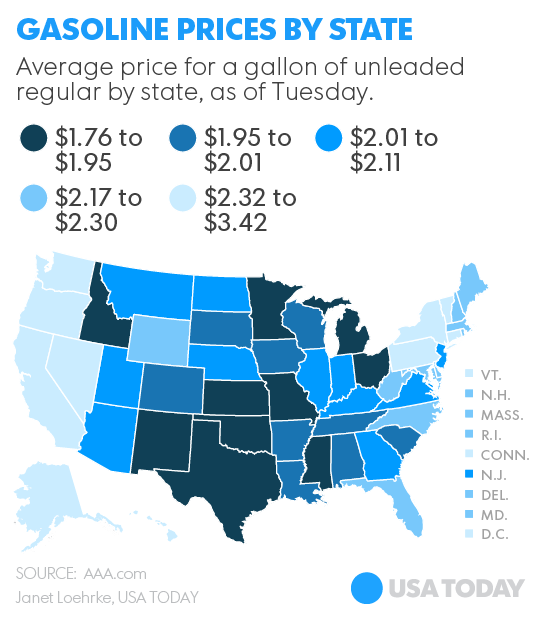Tesla hits some speed bumps
Tesla’s stock was down around $200 again after its fourth-quarter report disclosed that neither its sales nor profits had met analysts’ expectations. At the same time, the company went into what one analyst called its “insane mode” as founder Elon Musk predicted that by 2025 the company’s market capitalization would reach $700 billion, matching the current value of Apple.
Analysts were scratching their heads as Musk’s vision seemed utterly at odds with the difficulties that are starting to pile up with Tesla’s ability to meet current goals. The company’s 2014 revenues rose to $3.2 billion, up from $2 billion the year before. However, expenses continued to mount, and losses widened from $74 million to $294 million last year. For the fourth quarter, Tesla delivered only 9,834 of the 12,000 cars it had predicted. Musk blamed the winter weather and customers’ holiday travel for the shortfall. A bigger disappointment has been sales in China, where Tesla sold only 120 cars in January. Musk has supposedly messed up by insisting that the cars be sold only by dealers, whereas the Chinese want anyone to sell them. He also says that concerns about home chargers and the lack of public charging stations have made it extremely difficult to crack China’s notoriously tough market. Musk now says that the company is now not counting on any sales in China to help it reach its goals.
But those goals are wildly ambitious. Musk told analysts that Tesla is anticipating a 30 percent increase in revenues per year for the next 10 years, which is the pace needed to put Tesla’s market value on par with Apple’s. “That would imply sales volume of well over 5 million vehicles per year,” Edward Niedermeyer wrote in Bloomberg View. “That would have Tesla surpassing the 2014 sales of such familiar names as Nissan, Honda and Fiat-Chrysler – at highly significant profit margins – within a decade.” Needless to say, Niedermeyer and many others find this prospect unlikely.
But Tesla isn’t standing still. It announced last week that it will produce a battery for home electricity storage. This will fold nicely with its partnership with SunCity, run by Musk’s cousin. People who install solar panels on their roofs will welcome a battery system that allows them to store electricity for times when the sun doesn’t shine. Just as solar seems to function best when distributed across a wide variety of users, so energy storage may ultimately work best when it is distributed over a wide variety of users.
Whether Tesla will be able to survive all this, however, is still an open question. The main threat to Musk’s vision seems to be coming now, not from predictable delays and bumps in the road, but from healthy competition from experienced automakers. Chevrolet has announced the Bolt, a successor to the Volt, which will be swinging right in Tesla’s wheelhouse – the $30,000 market for electric vehicles that can travel 200 miles or more on one charge.
General Motors has moved the introduction date up to 2017 (the same as the Tesla 3) and seems deadly serious about entering the EV market. “The Bolt EV concept is a game-changing electric vehicle designed for attainability, not exclusivity,” General Motors CEO Mary Barra said in a statement. “Chevrolet believes electrification is a pillar of future transportation and needs to be affordable for a wider segment of customers.”
Besides the Bolt, GM will have an improved version of the Volt, plus the $75,000 Cadillac ELR, a plug-in model. Daniel Miller of Motley Fool isn’t terribly impressed with any of these efforts, noting that the ELR has already had little success competing with Tesla’s Model S in the luxury-car category. “Because of that premium, first-mover brand image that Tesla created with its Model S, it’s hard to imagine how the Bolt will steal much of Tesla’s Gen 3 market in 2017, even if it is price-competitive,” Miller writes.
But if Tesla really has something to worry about, it’s the rumors that Apple, its Silicon Valley rival and the world’s largest company, is preparing a secret plan to enter the car market as well. Just this week it was revealed that Apple has a secret project employing 1,000 people to come up with some kind of concept car that will rival the Tesla Model 3.
“Apple has batted around the idea of developing a car for years,” reported Adam Satariano and Tim Higgins of Bloomberg Business. “Phil Schiller, Apple’s senior vice president of marketing, said in 2012 court testimony that executives discussed building a car even before it released the iPhone in 2007. Mickey Drexler, an Apple board member and head of J Crew Group Inc., also said in 2012 that Apple co-founder Steve Jobs had wanted to build a car.”
Apple has worked on batteries for the iPhone and iPad and also has a supply chain that could easily be applied to vehicles. “The mapping system it debuted in 2012 can be used for navigation. Last year, Apple also introduced CarPlay, a software system that integrates iTunes, mapping, messaging and other applications for use by automakers,” Satariano and Higgins wrote. Of course, that’s a long way from turning out thousands of vehicles, but Apple has invaded other businesses before. It basically knew nothing about the music business when it started on iTunes, and had no experience with telephones when it invented the smartphone.
In any case, even if Tesla finds itself in competition with much larger established companies – something Musk predicted at the start – it is revolutionizing the field of automobiles by making the electric car seem practical. Although Musk’s dream may prove to be overblown, he has certainly advanced the search for alternatives to the internal combustion engine.


